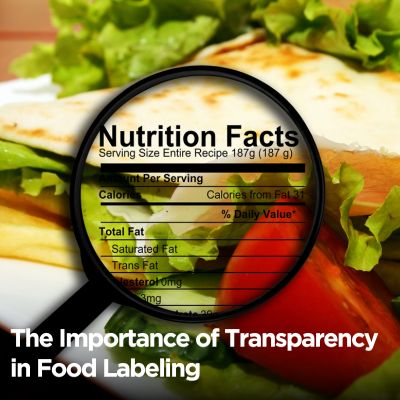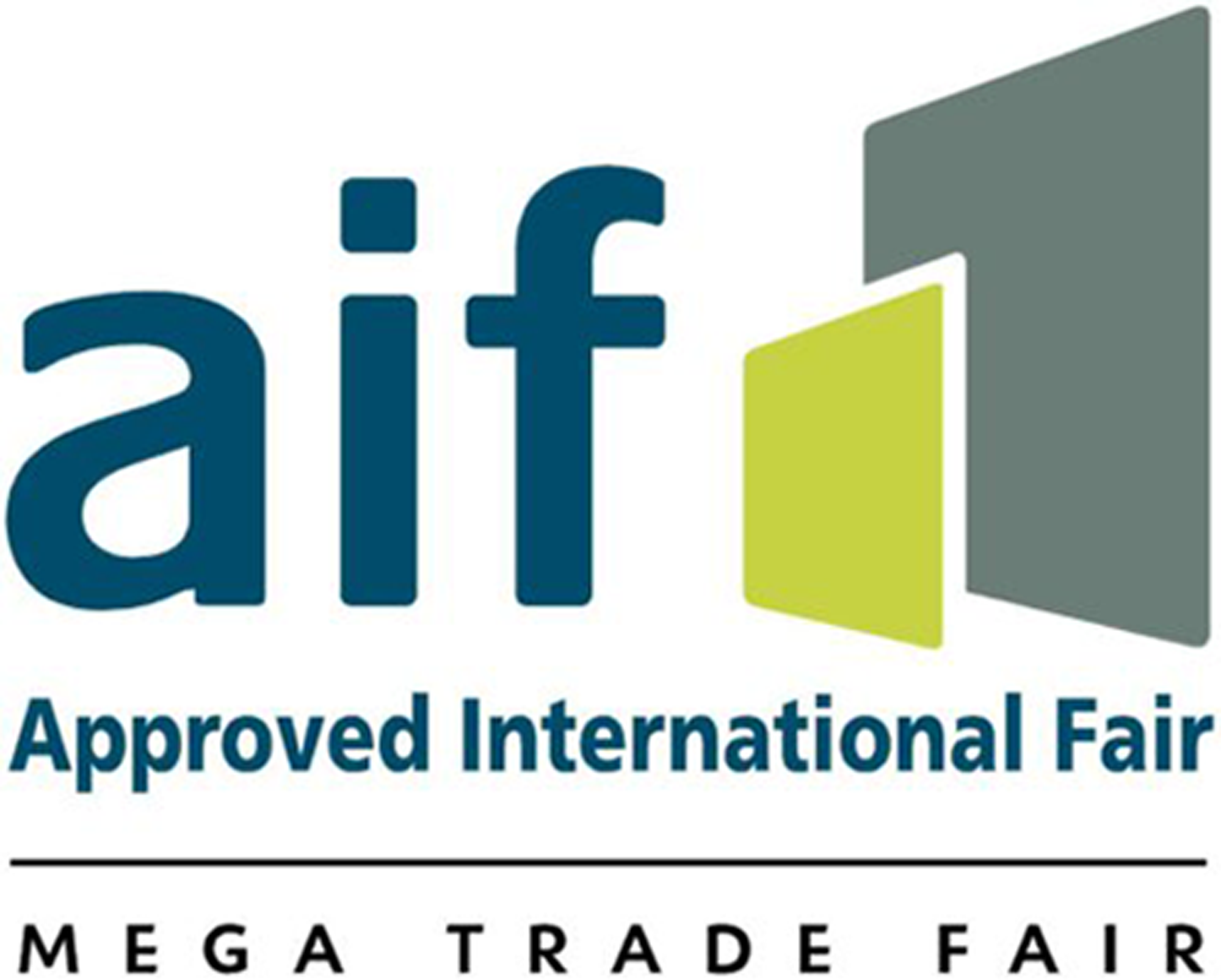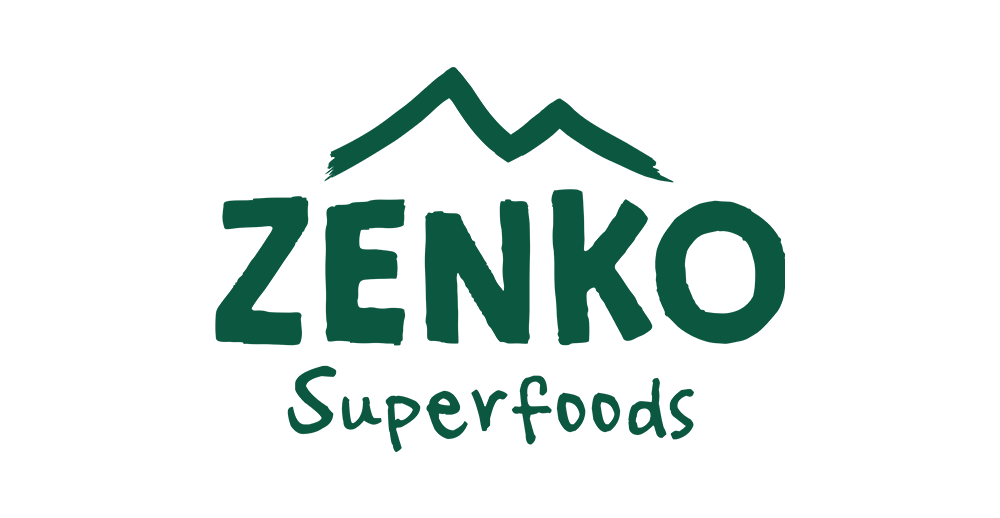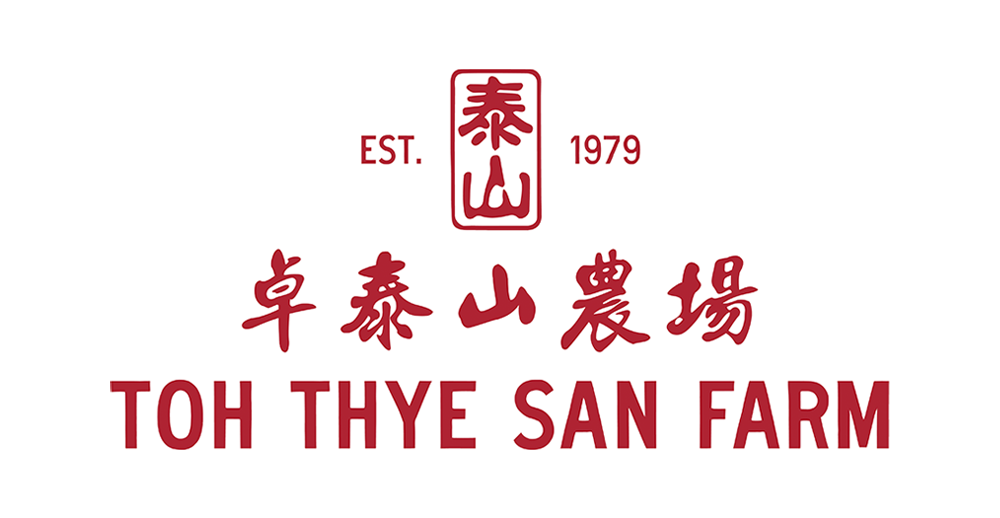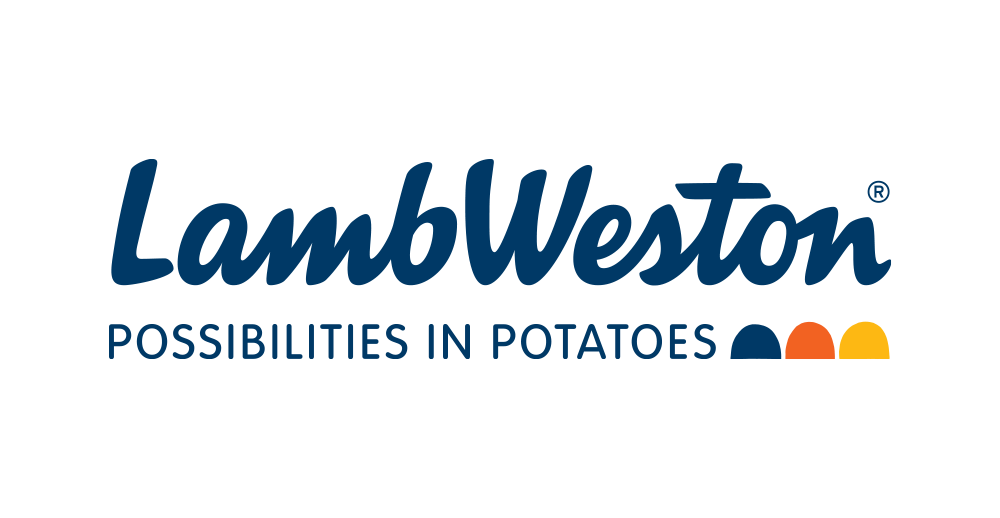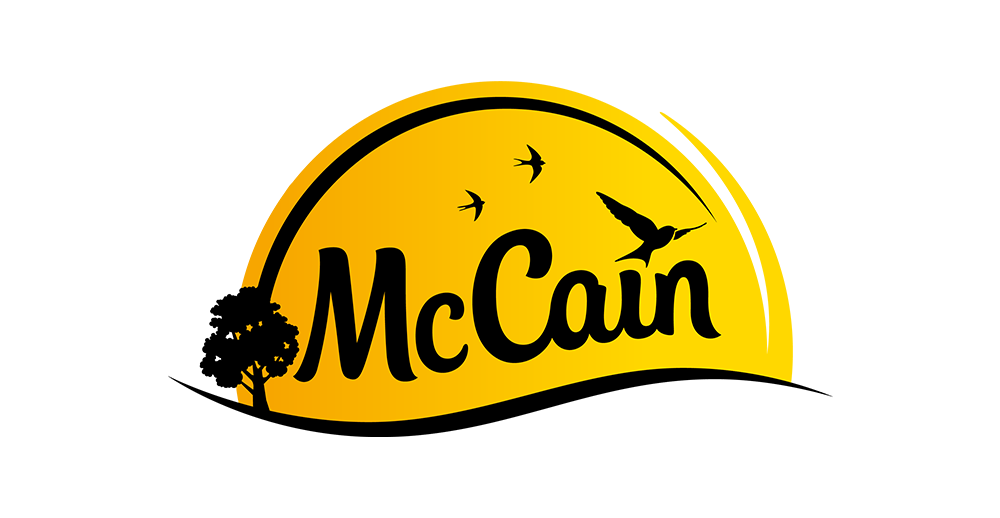People are rethinking sugar habits, and natural sweeteners are quickly becoming the go-to choice. As diets shift and incomes grow, more people are choosing healthier options. With rising concerns about health risks linked to refined sugar, such as obesity and diabetes, consumers are opting for alternatives.
Sweeteners like stevia, monk fruit, and erythritol provide the sweetness people crave without the health downsides of regular sugar. So, what was once a preference is now becoming a standard part of everyday diets.
There are several reasons behind this shift. More people are embracing organic and plant-based foods, low-carb diets like keto are gaining popularity, and governments are pushing to reduce sugar consumption. Food brands are also catching on, replacing artificial additives with clean-label sweeteners.
In 2025, the natural sweeteners market is set for continued growth, with new innovations making these alternatives more accessible than ever.
Natural Sweeteners Market Overview
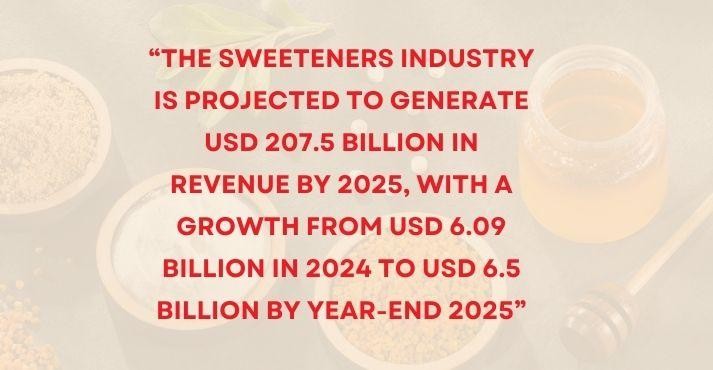
The natural sweeteners market is experiencing significant growth, with the industry expected to generate USD 207.5 billion in revenue in 2025. The market is projected to expand further, with an annual growth rate of 7.24% from 2025 to 2029. Specifically, it is anticipated to grow from USD 6.09 billion in 2024 to USD 6.5 billion by the end of 2025.
The main factors behind this growth include a growing preference for low-calorie, plant-based sweeteners like stevia, monk fruit, and erythritol. With increasing health concerns surrounding sugar intake, including its links to obesity and diabetes, more consumers are turning to these alternatives.
Additionally, the rise of organic and low-carb diets is boosting the demand for healthier sweetening options. As more food companies adopt clean-label ingredients, natural sweeteners are becoming easier to find, driving even faster market growth in 2025.
Key Trends Driving the Market
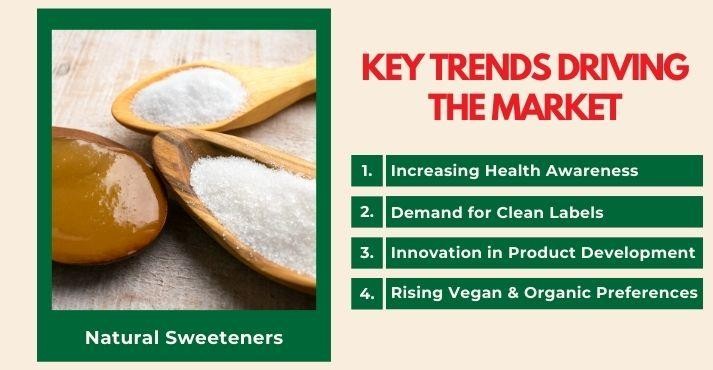
The natural sweeteners market is growing quickly as more consumers opt for healthier alternatives to traditional sugar. With increasing concerns about health issues like diabetes and obesity, many consumers are choosing plant-based, low-calorie sweeteners.
At the same time, there is rising interest in organic and vegan diets and a push for more transparent product labels. The government’s efforts to reduce sugar consumption are significantly shaping the market’s future in 2025.
1. Increasing Health Awareness
Consumers are becoming more conscious of how sugar affects their health, leading to a surge in demand for natural sweeteners. Diabetes and obesity rates continue to rise, especially in urban areas, encouraging people to choose options that don’t spike blood sugar levels.
Stevia, monk fruit, and erythritol are gaining popularity because they provide sweetness without the harmful effects of refined sugar.
This trend is especially strong in Southeast Asia, where functional foods and beverages, such as herbal teas, protein bars, and fortified drinks, use natural sweeteners to appeal to health-conscious consumers.
Moreover, natural sweeteners’ ability to reduce the negative effects of acidic foods further increases consumer preference for them. As the demand for low-glycemic and diabetic-friendly options rises, natural sweeteners are becoming essential ingredients in new products.
2. Demand for Clean Labels
Consumers are reading ingredient lists more closely than ever, preferring natural, minimally processed products. The clean-label movement is driving manufacturers to remove artificial additives and replace them with recognizable ingredients.
This shift has increased the use of natural sweeteners in packaged foods as brands focus on transparency and health-conscious choices.
3. Innovation in Product Development
Manufacturers continuously experiment with natural sweeteners to improve their taste, texture, and versatility. One primary area of innovation is the blending of sweeteners, such as combining stevia and monk fruit to reduce aftertaste while maintaining a sugar-like profile.
This innovation also reduces the need for artificial food additives, commonly used to enhance the flavor or texture of traditional sweeteners.
Additionally, advancements in extraction techniques are helping improve the flavor of stevia, making it more appealing to mainstream consumers.
4. Rising Vegan and Organic Preferences
The rise in plant-based diets and organic food preferences increases the demand for natural sweeteners. Consumers who avoid artificial ingredients and synthetic chemicals prefer organic-certified options, leading to a rise in organic stevia and other naturally sourced sweeteners.
Vegan-friendly products, excluding honey and other animal-derived sweeteners, are also growing in popularity, expanding the alternative sweeteners market.
As these trends continue, the natural sweeteners market is expected to grow throughout 2025, with increasing product availability and more companies investing in healthier alternatives.
Regional Insights: Southeast Asia in Focus
Southeast Asia is seeing an increasing demand for natural sweeteners as more consumers focus on their health and market trends shift toward healthier alternatives to refined sugar.
As concerns about obesity, diabetes, and other health issues grow, the region turns to local, plant-based sweeteners like palm sugar and coconut sugar, commonly used and culturally familiar in many Southeast Asian diets.
This rise in preference for natural sweeteners shows a change in eating habits and a greater emphasis on sustainability. Let’s look at the market’s performance in major Southeast Asian countries and the government policies driving these changes:
Market Performance in Key Countries
The demand for natural sweeteners is rising across Southeast Asia, driven by health concerns and local preferences. Let’s look at how different countries are performing:
1. Singapore:
In Singapore, the demand for natural sweeteners is growing as consumers focus more on health and wellness. Coconut and palm sugar are popular for their natural origins and health benefits.
These sweeteners are used in various products, such as beverages, snacks, and baked goods, catering to health-conscious consumers. The clean-label movement has also helped boost this trend, encouraging brands to remove artificial ingredients and prioritize transparency.
2. Malaysia:
Malaysia is experiencing a similar trend, with local natural sweeteners like palm sugar gaining popularity. The country has a large Muslim population, and many traditional sweets are made with palm sugar, which aligns with local taste preferences.
Moreover, considering that nearly 16% of Malaysian adults have diabetes, the demand for low-glycemic sweeteners is growing. As a result, palm and coconut sugars are increasingly viewed as healthier alternatives to refined sugar.
3. Indonesia:
Indonesia is experiencing a significant rise in the use of natural sweeteners like date syrup and coconut sugar, driven by the growing demand for organic, plant-based, and natural food products.
The country’s expanding organic food market is projected to grow at a CAGR of 11.5% from 2025 to 2031. Coconut sugar, a significant part of Indonesian culture and commonly used in traditional dishes, strengthens the preference for these natural sweeteners.
4. Thailand:
Palm sugar and coconut sugar have long been staples in Thai cuisine. With the growing trend of health-conscious eating and the government’s sugar tax, there is an accelerating shift toward natural sweeteners in food and beverage products.
Many brands are reformulating their products to include these natural alternatives in response to the increasing demand for lower-sugar options.
5. The Philippines:
The Philippines is also experiencing a shift towards coconut-based sweeteners, such as coconut nectar and sugar, which are used in products such as sports drinks and plant-based milk.
As plant-based diets become more popular, these natural sweeteners are increasingly included to cater to health-conscious consumers seeking healthier alternatives to refined sugars.
Government Policies and Initiatives
Southeast Asian governments are essential for promoting natural sweeteners through policies and initiatives to reduce sugar consumption.
In Singapore, the Healthier Choice Symbol (HCS) encourages food manufacturers to reformulate their products using healthier ingredients, such as natural sweeteners. This certification helps brands gain consumer trust while promoting better dietary choices.
Elsewhere in Southeast Asia, sugar reduction campaigns in countries like Thailand and Malaysia are pushing for healthier alternatives.
Thailand’s sugar tax has led to the reformulated formulation of many food and beverage products, encouraging companies to use natural sweeteners like palm and coconut sugar.
These initiatives reflect the region’s collective efforts to combat the rising health concerns associated with high sugar consumption.
Southeast Asia’s market trends and government policies are shaping a future where natural sweeteners are becoming more common in the region’s food and beverage industries. These changes are helping provide healthier and more sustainable options for consumers.
Challenges in the Natural Sweeteners Market
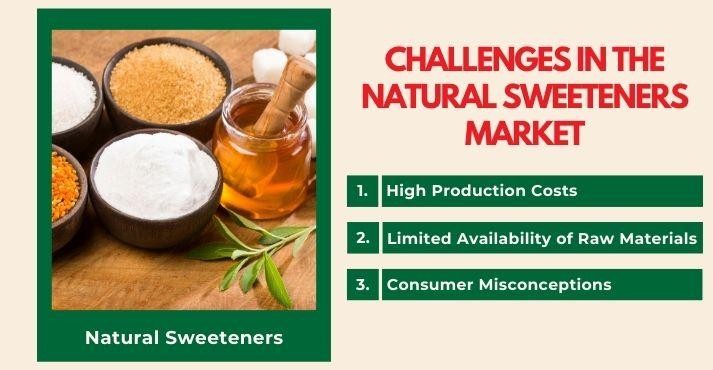
The natural sweeteners industry is expanding rapidly, but manufacturers still face significant challenges in meeting the growing consumer demand. These challenges include high production costs, limited availability of raw materials, and consumer misconceptions regarding the health benefits of natural sweeteners.
1. High Production Costs
Natural sweeteners like stevia and monk fruit usually require more costly production processes than artificial alternatives. Extracting and purifying natural sweeteners requires specialized equipment and labor-intensive processes, leading to higher production costs.
Additionally, sustainable farming practices necessary to ensure a steady supply of these ingredients further increase expenses. As a result, it can be harder for brands to price natural sweeteners competitively against cheaper artificial sweeteners, which could discourage some consumers.
According to industry reports, the rising costs of raw materials and the production of natural sweeteners can make them less affordable for some consumers, especially in price-sensitive markets.
2. Limited Availability of Raw Materials
Natural sweeteners are often sourced from specific plants, such as stevia, monk fruit, and coconut. This reliance on specific crops makes the supply chain vulnerable to disruptions caused by weather, pests, and diseases. These issues can limit the availability of raw materials and increase prices.
For example, stevia is mainly grown in regions like China and Paraguay, where drought or labor shortages can disrupt supply. Additionally, demand for these raw materials is focused in certain regions, creating supply imbalances and increasing costs for manufacturers outside those areas.
3. Consumer Misconceptions
Despite being marketed as healthier alternatives, many consumers still associate natural sweeteners with high-calorie content or artificial additives. Misunderstandings about the health benefits of these products, such as their low glycemic index and absence of harmful side effects, continue to persist.
Educating consumers is important for overcoming misconceptions and highlighting the benefits of natural sweeteners. However, shifting consumer behavior can be difficult in markets where artificial sweeteners have long been preferred.
Industry surveys show that consumer confusion over terms like “sugar alcohols” and “artificial sweeteners” can slow the adoption of natural sweeteners, limiting market growth.
Future Outlook for 2025 and Beyond
As the demand for natural sweeteners grows, the market is set to expand significantly in the coming years. Innovations in extraction techniques, broader applications in industries like pharmaceuticals and skincare, and new Southeast Asian opportunities indicate a promising future for natural sweeteners, especially as we progress through 2025 and beyond.
Technological Advancements
Advances in extraction and processing methods will influence the future of natural sweeteners. Better methods for extracting stevia, monk fruit, and other natural sweeteners can reduce production costs and increase their availability.
Some companies are exploring fermentation techniques to improve the efficiency of stevia extraction. This could lower costs and ensure a more reliable supply.
These advancements will make natural sweeteners more affordable and accessible in various products, from drinks to snacks and baked goods.
Expanding Applications
Natural sweeteners are no longer used only in food and beverages but also in products in other industries, such as pharmaceuticals and skincare. They are added to sugar-free supplements and medications for people with diabetes.
Additionally, natural sweeteners are used in skincare products such as lip balms and lotions for their moisturizing benefits. This growing use in different fields shows consumers increasingly seek natural, clean alternatives.
Market Opportunities in Southeast Asia
Southeast Asia holds great potential for the natural sweeteners market. Rural areas are becoming more aware of healthier products like coconut sugar, and as people shift toward plant-based diets, demand for natural sweeteners is expected to rise.
Government policies, such as Thailand’s sugar tax, also support this shift, creating a positive environment for the growth of these products.
These growth trends for sugar alternatives point to a positive outlook for natural sweeteners, driven by technological advancements, expanding uses across industries, and new opportunities in Southeast Asia.
Conclusion
The natural sweeteners market is on track for significant growth, thanks to advancements in extraction techniques, wider adoption across industries such as food, pharmaceuticals, and skincare, and the rise of health-conscious consumers increasingly prioritizing healthier, more sustainable options.
While challenges like higher production costs, raw material supply issues, and consumer misconceptions remain, technological progress and evolving market conditions are helping to tackle these hurdles.
Southeast Asia presents substantial growth potential, supported by government policies and changing consumer behaviors. As a result, the natural sweeteners market segment is expected to expand further.
In 2025 and beyond, these alternatives will play an even larger role across various sectors, offering healthier choices for consumers.

